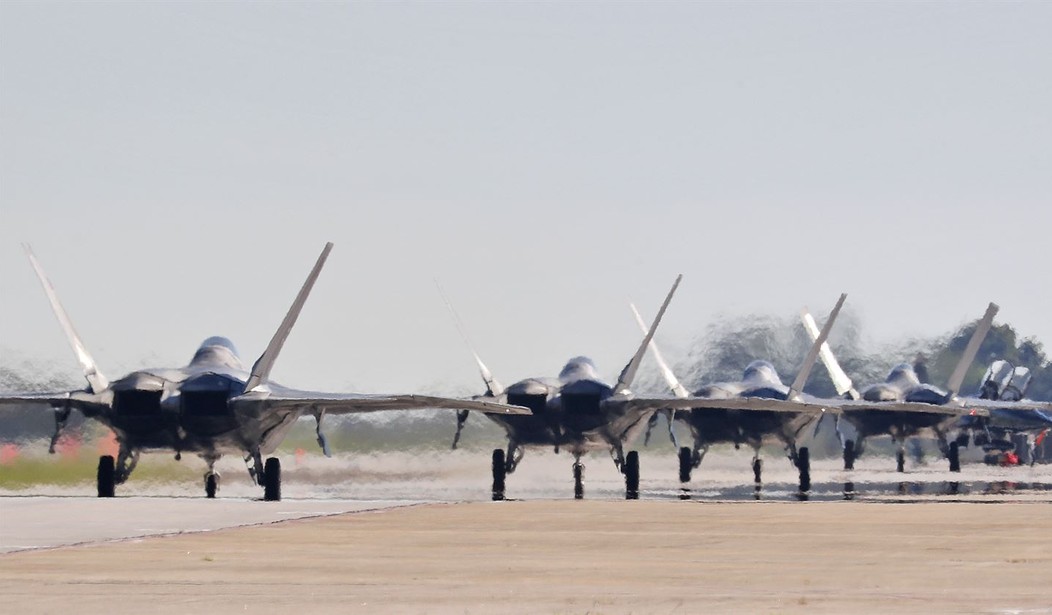For seventeen consecutive days in December 2023, highly sensitive US military bases in the Hampton Roads area of Virginia were the target of a drone swarm of unknown origin, type, or purpose. The official response seems to be one of studied indifference.
U.S. Air Force Gen. Mark Kelly wasn’t sure what to make of reports that a suspicious fleet of unidentified aircraft had been flying over Langley Air Force Base on Virginia’s shoreline.
Kelly, a decorated senior commander at the base, got on a squadron rooftop to see for himself. He joined a handful of other officers responsible for a clutch of the nation’s most advanced jet fighters, including F-22 Raptors.
For several nights, military personnel had reported a mysterious breach of restricted airspace over a stretch of land that has one of the largest concentrations of national-security facilities in the U.S. The show usually starts 45 minutes to an hour after sunset, another senior leader told Kelly.
The first drone arrived shortly. Kelly, a career fighter pilot, estimated it was roughly 20 feet long and flying at more than 100 miles an hour, at an altitude of roughly 3,000 to 4,000 feet. Other drones followed, one by one, sounding in the distance like a parade of lawn mowers.
The drones headed south, across Chesapeake Bay, toward Norfolk, Va., and over an area that includes the home base for the Navy’s SEAL Team Six and Naval Station Norfolk, the world’s largest naval port.
It gets better.
Officials didn’t know if the drone fleet, which numbered as many as a dozen or more over the following nights, belonged to clever hobbyists or hostile forces.
If this story is true, what the military doesn't know about the drones dwarfs what it does know. No estimate is given for the number of drones that appeared over Langley AFB before decamping for a flyover of other installations. That isn't an accident. If the size, altitude, and speed of the drones are known, I'm sure someone at least tried to count them, though, in fairness to the military that Joe Biden has created, they may have been unable to do that. It is difficult to believe that after a couple of weeks of appearing at roughly the same time, no one thought about having a helicopter aloft to follow the drones home. Likewise, a 20-foot object flying at 4,000 feet should show up on one of the dozens of radars managing airspace over Hampton Roads unless it has a stealth design, in which case we can rule out a non-national actor. The idea that a rogue hobbyist dropped a few million to develop a massive drone fleet to fly over US military installations strains credulity.
Drone incursions into restricted airspace were already worrying national-security officials. Two months earlier, in October 2023, five drones flew over a government site used for nuclear-weapons experiments. The Energy Department’s Nevada National Security Site outside Las Vegas detected four of the drones over three days. Employees spotted a fifth.
The military is falling back on "we can do nothing" as their reason for doing nothing.
Federal law prohibits the military from shooting down drones near military bases in the U.S. unless they pose an imminent threat. Aerial snooping doesn’t qualify, though some lawmakers hope to give the military greater leeway.
Nothing is an "imminent threat" before it is an imminent threat. This is what the flight line at Langley AFB looks like from the air.
Just for context, the Shahed 131/136 drone used by the Russians in Ukraine to attack Ukrainian cities and infrastructure is 11 feet long and has a maximum speed of 115mph. It carried a 110-pound warhead. The drones spotted at Langley are roughly twice as long. Every $350 million F-22 you see parked there could be hit by a rather cheap drone before the airbase had time to decide they were an "imminent threat" and react.As with so many other problems in the military coming out of Obama's third term, the course of action chosen by the USAF has been to literally hide.
This past week, Langley Air Force Base posted a notice looking for information on counter-drone netting that could keep the fighter jets at the base essentially shielded by spying outside UAVs. Drone swarms have been a concern for the U.S. military, given the low costs for many drones and the ability to mobilize them in large swarms. Some units have trained how to counter such drones.
A "request for imformaion," or RFI, is a procurement is "a standard business process with the purpose of collecting written information about the capabilities of various suppliers."
“RFIs may be used when the Government does not presently intend to award a contract, but wants to obtain price, delivery, other market information, or capabilities for planning purposes. Responses to these notices are not offers and cannot be accepted by the Government to form a binding contract. There is no required format for RFIs.”
To show you how deeply unserious the USAF is about responding to incursions by an unlimited number of unidentified UAVs, this is what it is planning to do.
The 633rd “is in the process of determining the acquisition strategy to obtain non-personal services for the Unmanned Ariel Services (UAS) Netting for East Ramp Metal Sunshades,” according to the contracting notice. “The intention of the netting is to deter and ultimately prevent the intrusion of UAS’s near airmen and aircraft. This initial sunshade netting installation on the metal sunshade (bay Alpha 1) shall serve as a proof of concept for the remaining sunshades.”
The “netting should be capable of disabling a Group 1/ “Small” Unmanned Aerial Systems (UAS), such as the DJI Matrice 300 RTK, while remaining attached,” the notice explains. Per the U.S. military’s definitions, drones in Group 1 can have weights of up to 20 pounds, fly up to 1,200 feet, and reach speeds of up to 100 knots.
In other words, they are considering purchasing netting that will not defeat an object weighing about 800 pounds (the Shahed weighs 440 pounds) and can achieve an altitude of at least 4,000 feet.
Absolutely nothing in this story makes sense, and if we take it at face value, we are admitting that some of the most sensitive military installations in the country are vulnerable to a drone swarm and that no one cares.














Join the conversation as a VIP Member